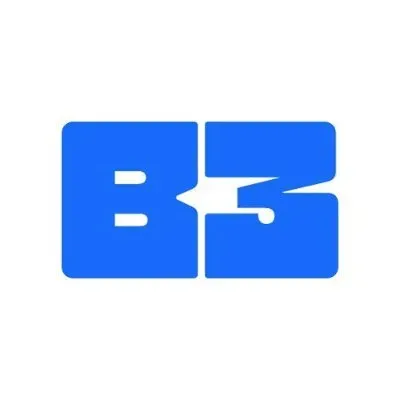
B3 Fun
Risk Management
?Risk Management
The RMA™ is a blockchain credibility certification assessing governance, transparency, security, and results, providing trusted verification for businesses in Web3.
VaaSBlock has not audited this project and cannot vouch for this organization.
RMA™ Status: ❌ Unverified
Verification of 6 major compliance criteria.
Technology
?Technology
A collection of public facing information, data collected through partners and our own tools view we present a projects technology in one place for easy verification.
Analysis and testing of tech infrastructures.
Marketing
Alpha?Marketing
Top level look at a projects marketing capablities currently in alpha this section will grow to show quickly how a project promotes itself and the effectiveness.
Screening of user base and community feedback.
Background
?Background
Using multiple public facing sources across the web view a summary of a projects purpose, key achievements and general overview.
Collection of basic administrative documentation.
Risk Management
Last Updated
2025/4/16
Transparency
Transparency Score
Algorithmic assessment of a project’s transparency level, using multiple public data points to measure its commitment to compliance, documentation, and clarity in communication.
Transparency Score
Category Rank
A ranking that positions the organization among its industry peers, evaluating its relative performance based on key compliance, credibility, and transparency indicators.
Category Rank
B3 Fun vs Experiences
VaaSBlock Rank
A global ranking that compares the organization against all entities listed on VaaSBlock, reflecting its overall credibility, transparency, and operational performance versus the full Web3 ecosystem.
VaaSBlock Rank
B3 Fun vs All Listed Organizations
Transparency
Transparency Score
Transparency Score
Algorithmic assessment of a project’s transparency level, using multiple public data points to measure its commitment to compliance, documentation, and clarity in communication.
Category Rank
B3 Fun vs Experiences
Category Rank
A ranking that positions the organization among its industry peers, evaluating its relative performance based on key compliance, credibility, and transparency indicators.
VaaSBlock Rank
B3 Fun vs All Listed Organizations
VaaSBlock Rank
A global ranking that compares the organization against all entities listed on VaaSBlock, reflecting its overall credibility, transparency, and operational performance versus the full Web3 ecosystem.
RMA™
✘ UnverifiedCorporate Governance
The verification of fundamental governance, organizational structure, including verifying the entity’s legal registration and adherence to local laws and regulations.
Corporate
Governance

Team Proficency
Evaluation of an organization’s personnel, ensuring that crucial team members possess the expertise and dedication necessary to execute current business models and scale effectively.
Team
Proficiency

Technology & Security
Assessment of the organization’s technological framework, including blockchain integrations (where relevant), system architecture, and overall IT infrastructure.
Technology
& Security

Revenue Model
Comprehensively evaluation of a company’s income-generating strategies (how do they make or intend to make money), ensuring financial robustness and sustainability.
Revenue
Model

Results Delivered
The Results Delivered component of the RMA™ audit comprehensively evaluates an organization’s ability to achieve its goals and honor its commitments.
Results
Delivered

Planning & Transparency
The Planning and Transparency component of the RMA™ audit offers a thorough assessment of how an organization manages its workflow and prepares for unexpected challenges.
Planning &
Transparency

Technology
Marketing
Marketing Effectiveness
This score assesses the impact of detected marketing activity and the corresponding price movement of a token. The score understands whole market movements to ensure tokens are assessed fairly against peers.
Marketing Effectiveness
Confidence Index
This index determines our confidence in the score we have given. Generally, as more data is collected, the confidence index will increase. If a project has lots of activity, this confidence is earned faster.
Confidence Index
VaaSBlock Rank
This identifies where a project sits compared to all projects accessed for Marketing Effectiveness.
VaaSBlock Rank
B3 Fun vs All Listed Organizations
Marketing Effectiveness
Marketing Effectiveness
This score assesses the impact of detected marketing activity and the corresponding price movement of a token. The score understands whole market movements to ensure tokens are assessed fairly against peers.
Confidence Index
Confidence Index
This index determines our confidence in the score we have given. Generally, as more data is collected, the confidence index will increase. If a project has lots of activity, this confidence is earned faster.
VaaSBlock Rank
B3 Fun vs All Listed Organizations
VaaSBlock Rank
This identifies where a project sits compared to all projects accessed for Marketing Effectiveness.
B3 Fun

@franklinbi_npc-labs-raises-18m-to-bring-mainstream-activity-7221235379624886274-oOou
11177
Followers
2-10
Associated Members
No Chain No Gain™ Podcast ⛉
This Organization is yet to join the No Chain No Gain™ Podcast and share insights on what makes their business trustable and innovative.
💡 NCNG generated over 1 Million impressions in its first six months of existence.
PR Impact
PR Impact
VaaSBlock provides estimations to the impact that traditional digital media can have on a project. This is an early release; more areas of PR are planned in future versions.
Search Terms ? Search TermsThese are the terms we discovered the article for on page one of Google. | Est. Traffic ? Estimated TrafficWe estimate how much traffic an article will get. Generally, our estimations are slightly higher than those of more established tools. We are working on the algorithm all the time, and results could change. | Est. Value ? Estimated ValueBased on the estimated traffic we generate an estimation for what this traffic would have cost to generate if you tried to target these users with ads. The positions for the article on google and the location of the traffic are the major factors in this estimation. | |||
|---|---|---|---|---|---|
B3fun Debuts Mainnet With Record Breaking 367k Wallets And 47m source: Cointelegraph | B3fun Debuts Mainnet… — B3fun Debuts Mainnet With Record Breaking 367k Wallets And 47m source: Cointelegraph | Organic | jp.cointelegraph.com | ||
B3 (Base) Price Today | B3 USD Price Live Chart & Market Cap | DropsTab source: dropstab.com | B3 (Base) Price Toda… — B3 (Base) Price Today | B3 USD Price Live Chart & Market Cap | DropsTab source: dropstab.com | Organic | dropstab.com | ||
B3 fun – All information about B3 fun ICO (Token Sale) – ICO Drops source: icodrops.com | B3 fun – All in… — B3 fun – All information about B3 fun ICO (Token Sale) – ICO Drops source: icodrops.com | Organic | icodrops.com | ||
B3 Fun Funding by Chain Broker source: chainbroker.io | B3 Fun Funding by Ch… — B3 Fun Funding by Chain Broker source: chainbroker.io | Organic | chainbroker.io |
| Est. Traffic | Est. Value | ||
|---|---|---|---|
B3fun Debuts Mainnet… — | |||
B3 (Base) Price Toda… — | |||
B3 fun – All in… — | |||
B3 Fun Funding by Ch… — |
Background
Organization Name – B3 Fun
Category –  Experiences
Experiences
About
powered by irmaAI
irmaAIB3.fun is often described as a new kind of on-chain arcade, yet even that label may understate its ambition. Built, it is claimed, by a cohort of engineers who once shaped Coinbase’s Layer-2 network… Base, the project presents itself as a horizontally scaled and “hyper-operable” ecosystem in which games are meant to move across chains with the same ease that players move between titles. According to promotional copy on its own site, the stated goal is to eliminate the hidden costs of fragmentation while preserving the self-custody ideals that first drew many users to Web3 gaming. Whether this promise will translate into sustained traction remains to be seen, but early activity hints at noteworthy momentum. 
It was reported in mid-August 2024 that B3.fun’s one-month public testnet closed with more than 367,000 unique wallets and just over forty-seven million transactions, numbers that observers argued placed the experiment among the most active gaming pilots ever recorded on an Ethereum-aligned network. These figures, if accurate, suggest that the project’s strategy of integrating account-abstraction tooling and subsidizing gas fees resonated with at least a portion of the crypto-gaming audience, though critics have cautioned that faucet-fuelled usage can fade once incentives taper. Still, advocates point out that such a high-noise environment is exactly where stress-tests are valuable, and they claim the platform remained stable throughout the surge. 
Mainnet went live a few weeks later, and it is claimed that more than twenty established or up-and-coming studios—including Mighty Bear Games, Parallel Studios, Nifty Island, and Infinigods—either signaled support or committed to deploy titles during the inaugural season. Some of those studios have since reiterated their interest in public interviews, framing B3.fun as a neutral venue that can handle sudden traffic spikes without locking developers into a single scaling solution. The project’s architects frequently cite “chain abstraction,” powered by the Sprinter framework and additional work from research firm ChainSafe, as the secret sauce that allows a single game session to settle on different execution layers while shielding the end-user from complex bridging steps. 
Governance, it was explained at launch, is expected to flow through the Player1 Foundation, a Swiss-based non-profit that purports to manage protocol upgrades, treasury allocations, and the curation policies of BSMNT.fun, the accompanying game-discovery portal. Because the foundation structure resembles the model adopted by other Base-adjacent projects, analysts have inferred that the team hopes to calm regulators by separating profit-making activities from protocol stewardship, although the legal durability of such approaches is still being debated across jurisdictions. What is clear is that the foundation has already become the official channel through which improvement proposals are surfaced, and several contributors have hinted that token-holder voting may eventually decide portions of the platform’s fee schedule. 
The network’s native asset, trading under the ticker B3, occupies the center of this design. Block-explorer data indicates that the primary contract (0xB3B32F9f8827D4634fE7d973Fa1034Ec9fdDB3B3) was deployed to Base on 8 February 2025, with public trading commencing roughly forty-eight hours later. Exchange dashboards show a total supply of one hundred billion tokens, of which just over twenty-one billion appear to be circulating at the time of writing. On 18 May 2025 the token was quoted near $0.0055 on several retail venues that support the Base network, implying a fully diluted valuation in the half-billion-dollar range—figures that would place B3 among the larger GameFi plays of the current cycle. It should be stressed that these numbers can change sharply, and the project team itself has repeatedly urged users to exercise caution.  
Liquidity is, for now, distributed between centralized exchanges such as Bybit, Coinbase Exchange, and MEXC, and decentralized pools on Uniswap v3 and Sushiswap. Several market-makers have praised the near-zero buy and sell tax encoded into the Base contract, arguing that the configuration lowers slippage and therefore makes it easier for arbitrageurs to keep CEX and DEX prices in sync. Skeptics counter that an aggressive tax-free model also leaves the gate open for flash-loan-driven manipulation, especially while the circulating float is relatively thin. The project has so far declined to introduce dynamic fees or transfer cooldowns, signalling confidence that automated monitoring tools will be enough to deter hostile bots.  
Security assessments appear to be a work in progress. A widely referenced automated scan by Cyberscope marks the contract with a neutral risk score of roughly seventy-one percent, which places it in the top third of projects tracked on that platform. However, the same dashboard notes that no full, line-by-line audit has yet been published under the firm’s “Cyberscope Audit” standard, meaning that the evaluation relied on heuristics rather than manual code review. This absence of a formal report has not deterred all investors, but some community members argue that a high-traffic gaming ecosystem eventually needs an independent audit from a recognized security laboratory if it hopes to court enterprise-grade publishers. Representatives of B3.fun have hinted on social channels that a deep audit is “in the pipeline,” yet no target date has been confirmed. 
Beyond pure token mechanics, B3.fun’s most distinctive talking point may be its attempt to bridge the cultural gap between Web2 and Web3 players. Executives have repeatedly claimed that chain abstraction lets developers treat Base as a high-throughput settlement layer while continuing to shape game loops in familiar engines such as Unity, Unreal, or Godot. For users, that architecture promises log-ins through email-style credentials, invisible wallets, and gas sponsorship so that the first clicks feel indistinguishable from a standard mobile free-to-play title. Early testers have described the onboarding flow as “remarkably smooth,” though others have raised concerns that heavy reliance on meta-transaction relayers could become costly if Base network fees spike during unrelated on-chain events. 
The coming months are expected to reveal whether B3.fun can convert early hype into a sustainable economy. Insiders whisper that season-one rewards will distribute retroactive airdrops to players who maintain daily streaks, effectively turning activity into a loyalty program. At the same time, the Player1 Foundation is said to be drafting a staking framework that would grant token-holders access to closed betas, merchandising discounts, and governance weight. Rival platforms, including Immutable X and Ronin, have pursued similar strategies with mixed results, and observers caution that differentiating on incentives alone rarely produces lasting retention. Still, B3.fun’s cross-chain ambitions and its cultivation of a “developer-first” narrative could attract studios looking for alternatives to isolated rollups. 
Regulatory clarity will likely influence every facet of this roadmap. Because B3 tokens function as both utility chips and potential profit-sharing instruments—depending on the interpretation of staking yield—jurisdictions could arrive at divergent views on whether the asset constitutes a security. For that reason, the team’s public messaging has leaned on language about “player empowerment” and “in-game economy tooling” rather than direct references to dividends. Industry lawyers note that the ongoing global conversation around MiCA in Europe and the SEC’s evolving posture in the United States could either validate or constrain B3.fun’s vision. Until those rules solidify, the project remains an experiment watched closely by regulators, competitors, and would-be partners in equal measure.
For readers interested in technical due diligence, an automated scan of the token contract is publicly accessible at https://www.cyberscope.io/audits/coin-b3 Read More
Creation Date
December 2025
Headquarters
Unknown
Organization Maturity Level
Early-Stage
RMA™ Type
–
Useful Links
Website – b3.fun
Notable Achievements
N/A
- vaasblock.com /
- Experiences /
- B3 Fun








